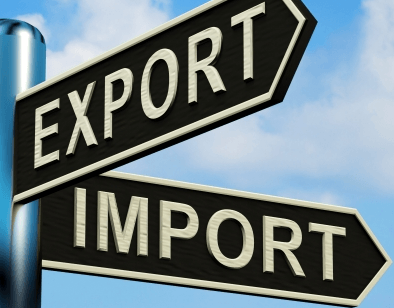Intra-African trade could double to $400b – Oramah
 There is a long held debate about the volume of intra-African trade. Some say it is 10 per cent, others say it is underestimated because it could be more than that, and put it at 12 per cent. It is about 3 per cent of global trade.
There is a long held debate about the volume of intra-African trade. Some say it is 10 per cent, others say it is underestimated because it could be more than that, and put it at 12 per cent. It is about 3 per cent of global trade.
According to the African Trade Policy Centre (ATPC) of the United Nations Economic Commission for Africa (UNECA), global trade (in current prices) increased from $13 trillion in 2000 to an estimated $30 trillion in 2010, but Africa’s share in world trade has been in decline since 1980 and currently stands at about three per cent.
According to the 2010 International Trade Statistics of the World Trade Organization compared to other regions, intra-African trade is low.
For instance in 2009, intra-European trade was 7 per cent, intra-Asian trade stood at 52 per cent and intra-North American trade was 48 per cent.
Intra-South and Central American trade was 26 per cent but intra-African trade was 11 per cent.
Africa produces large amounts of raw materials, which are exported as primary products.
The data shows that the high concentration of African exports in primary products are made up of agricultural and food products, 9.4 per cent, primary products 36.43, 35.4 per cent are other industrial products and 18.9 per cent of services.
There is however consensus that intra-African trade has the potential to boost economic growth on the continent.
Dr. Benedict Oramah, President of the African Export-Import Bank (Afreximbank) has recently said the size of intra-African trade could be doubled from the current level of about $170 billion per year to almost $400 billion by addressing the issue of availability of market information on the continent.
He was reported to have said in an address on June 29, 2017 during the opening of the meeting of the Afreximbank Advisory Group on Trade Finance and Export Development in Africa, that lack of knowledge of the continent and limited access to trade information among African businesses constituted major constraints to cross-border trade.
He reportedly cited a study on the regional value chains for leather and leather products, jointly commissioned by Afreximbank, UNCTAD and the Commonwealth Secretariat, which found that Australia was the main source of tanned hides and skins for Southern Africa, including South Africa, even though Zambia exported the same products at lower costs and its exports were higher than South Africa’s imports.
The report, he said, also showed that South Africa imported leather that had been further prepared after tanning from India at double the price at which Ethiopia exported such leather while Mauritius and Nigeria imported leather products from Italy and Belgium at much higher costs than what South Africa and Botswana exported them for.
“In the same way, Kenya imported raw hides from New Zealand while Burundi exported the same product to the world at a much lower price and West African countries, on average, imported meats worth more than $3 billion per annum from Argentina and Australia even though Mali, Chad and Sudan could supply all the meats required by the region,” he added.
According to a press release from the Bank, he argued that if Europe, with a population of 550 million people in 28 countries and a land area of 10.2 million square kilometres, could have intra-Europe trade of about $6 trillion, it was possible for Africa, which has double that population, nearly double the number of countries and three times the land size, to achieve the same level, if not multiples, of such trade.
There are meanwhile, efforts to make intra-Africa trade a reality with the establishment of the Continental Free Trade Area (CFTA), but it has been slow. This year 2017 is the set date, but it is not clear if that will happen. A meeting of ministers held in March in Dakar to decide on the CFTA ended in disagreement. No conclusions were reached.
While the prospects for intra-African trade are high, the road to the destination is uncertain and bumpy.
By Emmanuel K. Dogbevi
